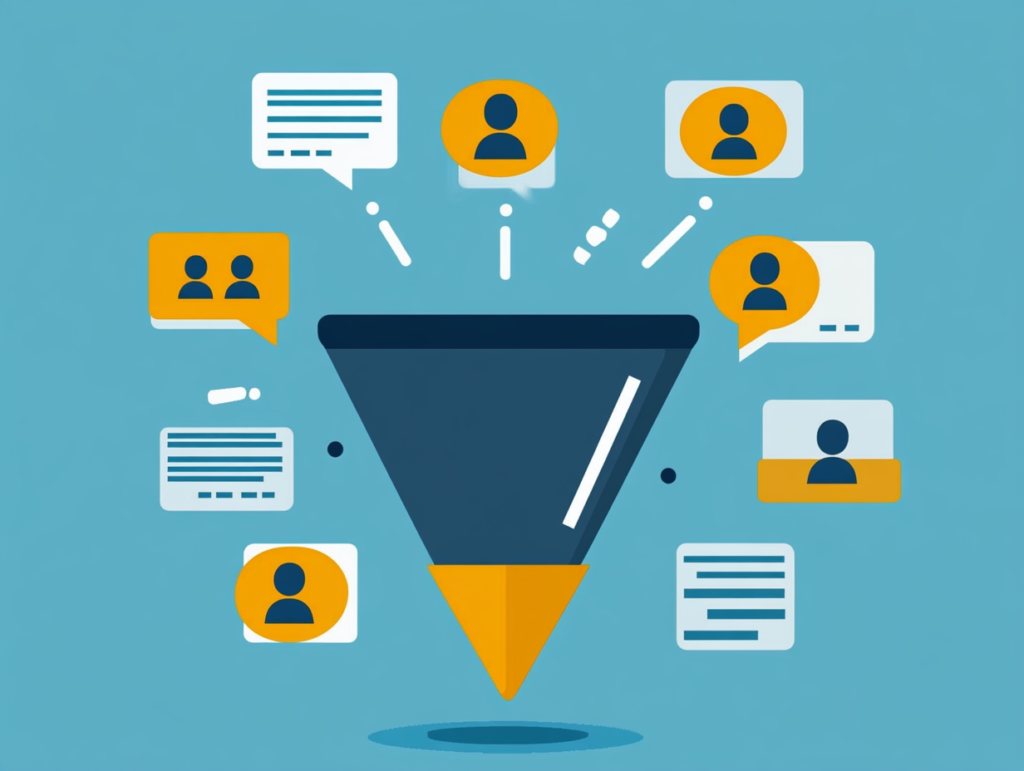Introduction
Customer acquisition is the lifeblood of any successful business. Whether you’re launching a startup or scaling an established company, acquiring new customers ensures continuous revenue growth and business expansion. However, the customer acquisition landscape has evolved dramatically, with digital channels reshaping how companies attract, engage, and convert leads into loyal customers.
In this article, we’ll explore everything from the fundamental concepts of customer acquisition to advanced tools, strategies, and industry best practices designed to help your business thrive in 2024 and beyond.
Customer Acquisition: What It Is and Why It Matters

Customer acquisition refers to the process of bringing in new customers to your business. It involves identifying potential leads, engaging them through marketing and sales efforts, and eventually converting them into paying customers. But why is customer acquisition so crucial? It directly impacts revenue generation, market expansion, and brand recognition, forming the foundation for sustainable business growth.
In today’s fast-paced, digitally-driven world, customer acquisition has become more sophisticated. Traditional methods like cold calling or print ads are less effective than they used to be. Now, businesses leverage data-driven strategies, social media, and automation tools to reach their target audience. Understanding and mastering the art of customer acquisition is essential to stay ahead of the competition.
Customer Acquisition Tools: Top Solutions for Success

To effectively acquire customers, businesses need the right tools. These solutions help streamline various aspects of the acquisition process, from lead generation to conversion and nurturing. Here are the top customer acquisition tools, including the comprehensive solutions provided by CLIQSA.
1. Customer Relationship Management (CRM)
CRM systems are vital for managing relationships with leads and customers throughout the sales process. They centralize data, track interactions, and streamline communication, making converting leads into loyal customers easier.
- Salesforce: Industry leader in CRM, known for its scalability and extensive integrations.
- HubSpot CRM: A free, user-friendly CRM that integrates with marketing and sales platforms, offering an all-in-one solution.
- Zoho CRM: A highly customizable CRM with AI-powered insights and omnichannel support.
- CLIQSA CRM: Offers robust customer management features that help businesses track interactions, automate follow-ups, and personalize customer communication.
- Pipedrive: A simple, sales-focused CRM that emphasizes pipeline management.
- Insightly: Combines CRM and project management features, ideal for growing businesses.
2. Marketing Automation Tools
Marketing automation tools enable businesses to automate repetitive tasks like email campaigns, social media posting, and lead nurturing, ensuring leads are engaged consistently.
- Marketo: An advanced platform with a focus on B2B marketing, offering automation and in-depth analytics.
- ActiveCampaign: Combines marketing automation with CRM, ideal for creating personalized customer journeys.
- Klaviyo: Designed for eCommerce, it focuses on email automation with robust segmentation options.
- CLIQSA Marketing Automation: Automates personalized campaigns across multiple channels, including email and WhatsApp, ensuring targeted engagement.
- Drip: Focuses on automation for eCommerce brands, offering personalized customer experiences.
3. Lead Generation Tools
Lead generation tools are essential for capturing potential customers’ contact information. These tools use forms, pop-ups, and landing pages to engage visitors and turn them into leads.
- OptinMonster: Specializes in conversion optimization with pop-ups and exit-intent technology to capture leads.
- Leadpages: A landing page builder focused on creating high-converting pages to capture leads.
- Unbounce: Known for customizable landing pages and A/B testing to improve lead generation performance.
- Typeform: Offers interactive forms and surveys that engage users and capture lead data.
- CLIQSA Lead Generation Tools: Provides customizable landing pages, forms, and pop-ups integrated with its CRM and email marketing tools for seamless lead capture.
- Hello Bar: A tool for adding lead capture pop-ups and sliders to websites.
4. Funnel and Sales Page Builders
Funnel builders help businesses guide leads through the customer journey—from awareness to conversion—using optimized sales pages and step-by-step flows.
- CLIQSA Funnel and Sales Page Builder: Allows businesses to build high-converting funnels with integrated email automation and analytics.
- ClickFunnels: A leading tool for creating sales funnels, optimized for conversions with customizable templates.
- Kartra: An all-in-one platform that includes funnel building, email marketing, and CRM tools.
- Instapage: A landing page builder focused on optimizing the customer journey with personalization features.
- Builderall: A comprehensive marketing platform that includes funnel creation, website building, and automation tools.
- Systeme.io: A budget-friendly tool that combines funnel building, email marketing, and automation for small businesses.
5. Email Marketing Tools
Email marketing remains one of the most effective ways to nurture leads. These tools allow businesses to engage with prospects through targeted campaigns and automated sequences.
- Mailchimp: Popular for its ease of use and wide array of templates, offering email marketing and automation.
- Constant Contact: Provides email marketing, list management, and easy-to-use design tools, ideal for small businesses.
- ConvertKit: Focuses on creators and bloggers, offering list segmentation and personalized email journeys.
- Sendinblue: Combines email marketing, SMS marketing, and automation features in one platform.
- GetResponse: Provides email marketing, automation, and webinar hosting features, making it ideal for eCommerce and B2B.
- CLIQSA Email Marketing offers advanced email automation, intelligent list segmentation, and personalized content delivery to nurture leads and drive conversions.
6. WhatsApp Marketing Tools
With over 2 billion users, WhatsApp is a key platform for businesses looking to engage with customers directly and in real-time. Marketing tools for WhatsApp help businesses reach customers in a personalized and instant manner.
- CLIQSA WhatsApp Marketing: Integrated with its CRM and marketing automation, it enables direct customer engagement via WhatsApp, improving response rates and conversions.
- WATI: Offers automated messaging, chatbots, and personalized campaigns specifically for WhatsApp Business.
- Twilio: A communication platform that provides API-driven WhatsApp messaging services for businesses looking to scale personalized communication.
- Zoko: Helps businesses create and manage their WhatsApp Business accounts, automating customer communication.
- WhatsApp Business API: The official solution for medium to large businesses to engage with customers, offering automation and integration capabilities.
Understanding Customer Acquisition Cost (CAC) and How to Optimize It

Customer Acquisition Cost (CAC) is one of the most critical metrics in measuring the efficiency of your acquisition efforts. CAC calculates how much it costs to bring in one paying customer, factoring in marketing expenses, sales team salaries, and other relevant costs. Optimizing CAC is essential to maintaining profitability, especially as acquisition costs rise in competitive industries.
To calculate CAC, use the following formula:
CAC = Total Marketing and Sales Costs / Number of New Customers Acquired
Once you know your CAC, the next step is to optimize it. Reducing CAC can involve various strategies, such as improving your targeting, automating marketing processes, and refining your sales funnel. Successful companies like Dropbox have slashed CAC through viral marketing campaigns, incentivizing existing users to refer new customers. Constantly monitoring and adjusting your acquisition strategy can result in significant long-term savings.
By combining CLIQSA’s powerful customer acquisition suite with other industry-leading tools, businesses can build a comprehensive and scalable customer acquisition strategy. These tools not only streamline marketing efforts but also help automate key processes, optimize conversions, and ensure long-term business growth.
Alpha Nalla Bah, Founder & CEO of CLIQSA
The Role of a Customer Acquisition Company: When and Why to Hire One

As businesses grow, managing customer acquisition in-house can become challenging. That’s where customer acquisition companies step in. These agencies specialize in acquiring new customers using digital marketing techniques, data analysis, and lead generation strategies.
Pros of Hiring a Customer Acquisition Company:
- Access to specialized expertise and advanced tools
- Scalability, allowing you to focus on other areas of your business
- Proven track record of implementing successful strategies across industries
Cons:
- Higher upfront costs compared to in-house teams
- Less control over the acquisition process
- Potential misalignment with your brand’s values or messaging
If your business struggles with lead generation, lack the expertise to optimize CAC, or needs rapid growth, partnering with a customer acquisition company could be a wise investment. Examples of top agencies include Directive, Single Grain, and GrowthHackers.
Building an Effective Customer Acquisition System for Long-Term Success

A well-structured customer acquisition system is essential for sustained business growth. This system includes all processes, tools, and strategies used to attract, engage, and convert leads into customers. It goes beyond one-off tactics, focusing on creating repeatable and scalable methods for acquiring new customers.
Key components of a successful customer acquisition system include:
- Lead generation: Utilizing SEO, content marketing, paid ads, and social media.
- Lead nurturing: Engaging with prospects through email marketing, retargeting ads, and personalized content.
- Conversion: Optimizing landing pages, refining CTAs, and using data to improve conversion rates.
Case studies from companies like HubSpot and Slack demonstrate how a well-built acquisition system can drive exponential growth. For example, HubSpot uses content marketing, SEO, and CRM to build a customer acquisition machine that consistently brings in qualified leads.
The Customer Acquisition Process: From Prospect to Loyal Customer

The customer acquisition process is a journey that takes prospects from the awareness stage to becoming loyal, repeat customers. This journey is often visualized as a funnel with the following stages:
- Awareness: Prospects become aware of your brand through advertising, social media, or word-of-mouth.
- Consideration: Prospects evaluate your product or service by researching competitors and comparing offerings.
- Decision: Prospects decide to purchase after considering price, value, and overall fit for their needs.
In B2B markets, this process often involves a longer sales cycle with multiple touchpoints, while in B2C markets, the funnel tends to be shorter. To maximize conversions, businesses must tailor their strategies to guide prospects seamlessly through each funnel stage.
B2B Customer Acquisition: Unique Challenges and Strategies
Acquiring customers in the B2B space presents unique challenges, such as longer sales cycles, multiple decision-makers, and higher CAC. Companies often rely on relationship-building and trust to close deals.
Key strategies for B2B customer acquisition include:
- Account-based marketing (ABM): Focusing on high-value accounts with personalized outreach.
- Content marketing: Providing in-depth, valuable content such as white papers, case studies, and industry reports.
- Networking and partnerships: Building relationships through industry events, webinars, and professional networks.
Examples of successful B2B acquisition include LinkedIn’s use of targeted advertising and thought leadership to engage decision-makers.
B2C Customer Acquisition: Tactics to Boost Retail and Direct Sales
In the B2C space, acquisition strategies are typically more focused on mass appeal, with tactics designed to capture attention quickly and drive immediate sales.
Top tactics for B2C acquisition include:
- Social media marketing: Platforms like Instagram and TikTok are powerful for reaching younger demographics.
- Influencer collaborations: Partnering with influencers to promote products to their audiences.
- Discounts and promotions: Offering limited-time deals to incentivize purchases.
Successful B2C strategies can be seen in brands like Nike, which excels at social media engagement and influencer partnerships to drive product sales.
Mapping the Customer Acquisition Journey: A Roadmap for Success
Mapping the customer acquisition journey involves understanding how prospects move from the awareness stage to conversion and beyond. The process involves identifying key touchpoints and optimizing each interaction to move prospects closer to purchasing.
Steps to mapping the customer acquisition journey:
- Identify customer personas: Understand who your ideal customers are and what motivates them.
- Define key touchpoints: Outline the channels where prospects interact with your brand.
- Optimize each stage: Use data to refine messaging, offers, and CTAs at every stage of the journey.
By focusing on both B2B and B2C contexts, businesses can create a seamless journey that improves conversion rates and customer satisfaction.
How to Improve Customer Acquisition: Proven Tips and Tactics
Improving customer acquisition requires a combination of data-driven strategies and continuous optimization. Start by avoiding common mistakes, such as neglecting lead nurturing or failing to personalize marketing messages.
Proven tips to boost customer acquisition:
- Leverage analytics: Use tools like Google Analytics and Hotjar to track customer behavior and optimize landing pages.
- Personalize the experience: Tailor marketing messages based on customer data to improve engagement and conversions.
- A/B test regularly: Constantly test different elements of your website, emails, and ads to find the most effective combinations.
By implementing these tactics, you can immediately improve your customer acquisition efforts.
Conclusion: Mastering the Art of Customer Acquisition for Sustainable Growth
Mastering customer acquisition is a dynamic and ongoing process. As your business evolves, staying ahead of the competition requires adopting new tools, refining strategies, and continuously optimizing processes. Follow these best practices, leverage technology, and maintain a data-driven approach, and your brand will unlock sustained growth and long-term success.
Now that you have the tools and strategies you need, it’s time to start building your customer acquisition machine for 2024 and beyond!

